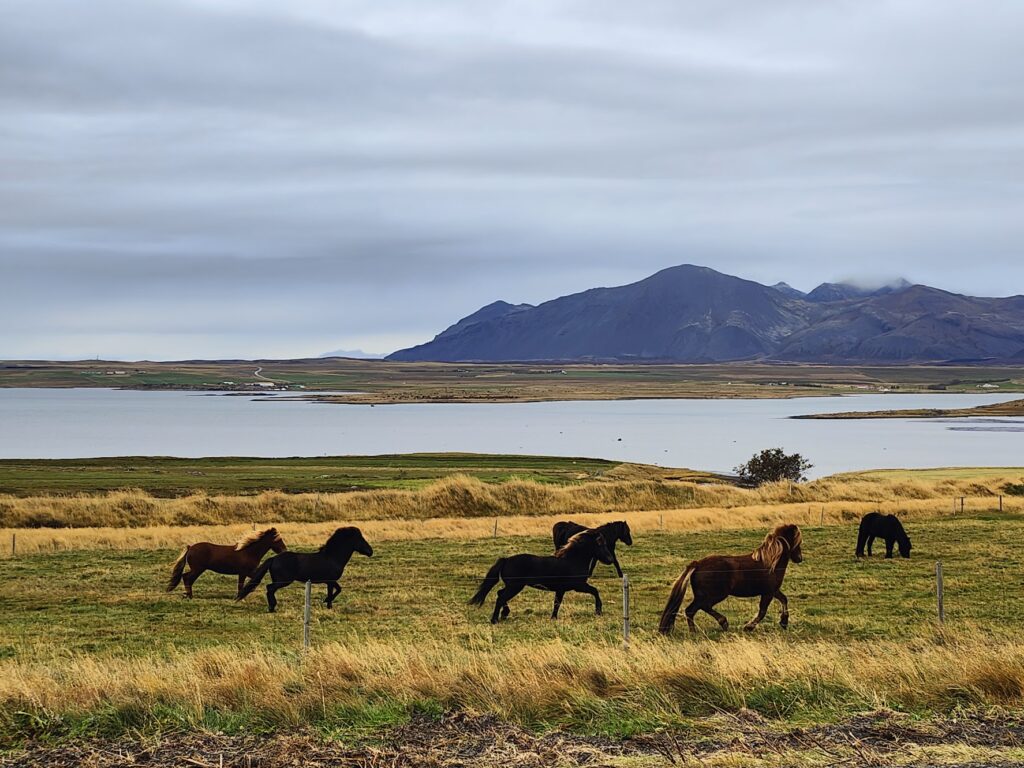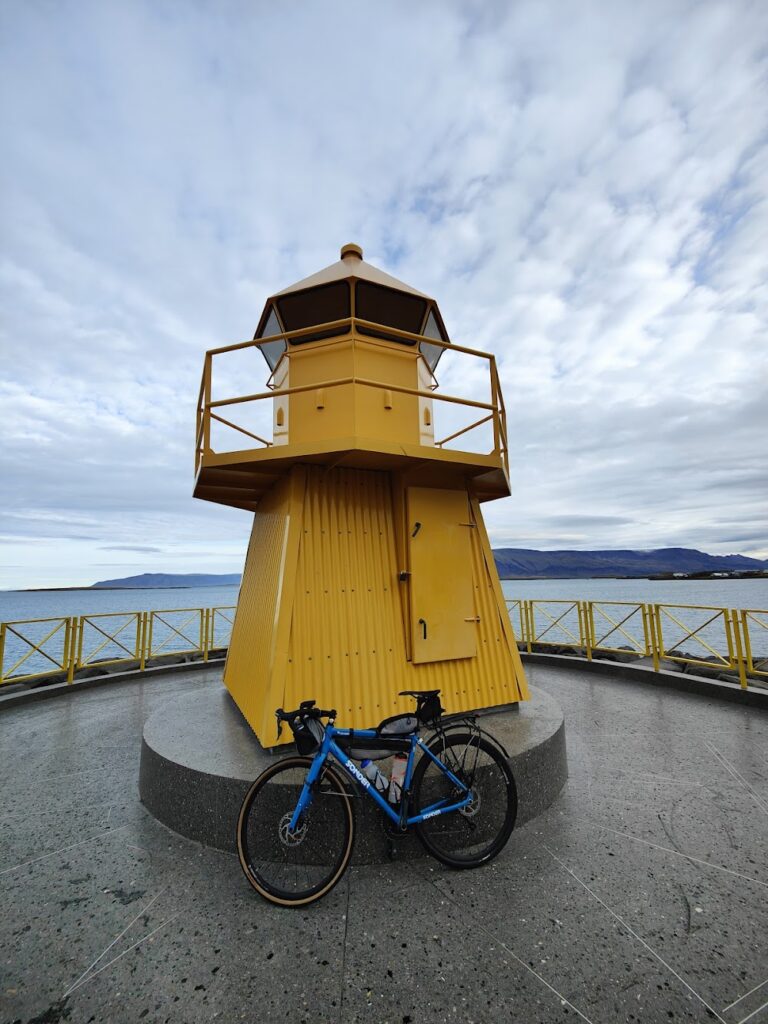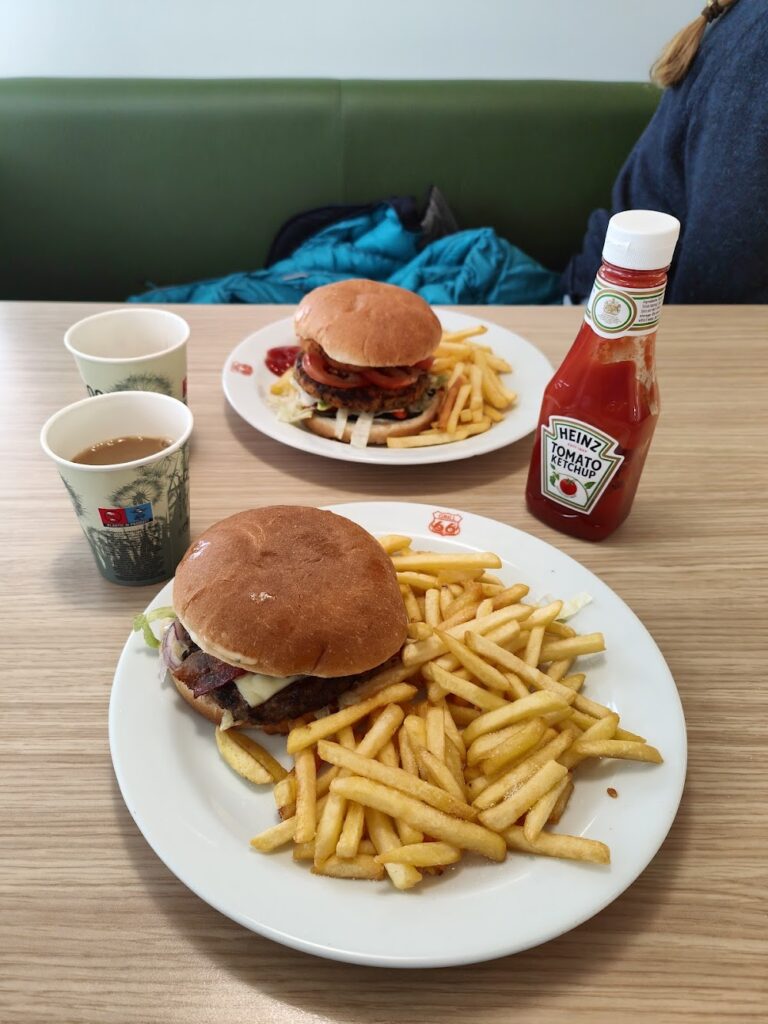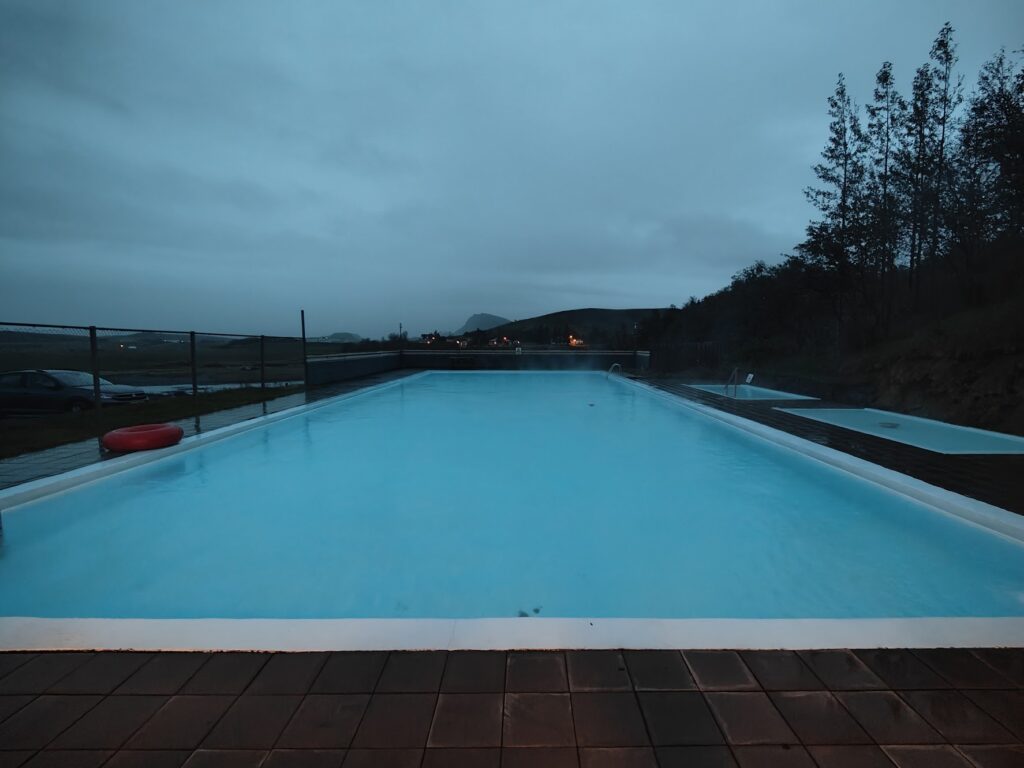
We awoke to a dry, breezy day in Reykjavik, with just a hint of blue in the sky. We were staying in a very central small apartment. The temperature was a steady 8 degrees C and the breeze was from the north-east, into my face. But it was manageable. Two thirds of the entire population of Iceland live in the Reykjavik area, so it has big, busy roads, new buildings and issues for cyclists like any other capital. However, it was simple enough to take to the waterfront cycle path, past the fancy glass Harpa concert venue, and then branch off from there, by the small White House where Reagan famously met Gorbachev.

My next cycle path headed north out of town in the direction of some of the faster growing satellite settlements like Mosfellsbaer, which was signed all the way from Reykjavik. This helped me a lot and avoided some of the worst stretches of Iceland’s Ring Road, which travels right around Iceland, and would mostly be my route this week. The trouble is there are so few useful roads here that almost everyone ends up on this same road. So all afternoon, after the bike paths ran out, I was squeezed into the side of the main highway with plenty of fast moving traffic for company. There wasn’t typically much of a shoulder, so I tried to make myself big and visible. Progress was steady.

After a couple of hours, I met Jenni at a prearranged lay-by and we put the bike in the back of the car. We were half a mile from the long tunnel under the large Hvalfjordur, and bicycles are banned. The alternative was a 30 mile detour around the entire fjord to the other side, and I didn’t need that. The tunnel bores deep under the neck of the fjord, curving steeply down underground for a couple of miles before bottoming out and climbing steeply up again. It was certainly no place for cyclists.

We popped up on the north side of the fjord and turned left to visit the nearby town of Akranes for lunch, which we enjoyed in a petrol station cafe, something of an Icelandic tradition. It wasn’t bad either. The rest of the town was pretty deserted this Saturday lunchtime. Then it was back on the bike and away into the moderate breeze under greying skies to complete the journey to the small town of Borgarnes, reached across Iceland’s second longest bridge (neither long nor spectacular) over another fjord. The town sits prettily on a small peninsula, surrounded by water and mountains. It is also a major stopover for vehicles moving up and down the ring road, with gas stations and services aplenty. My last visit here was in a January 2022 for a COVID test to get permission to fly home after an extended family New Year adventure in Iceland. We all passed, luckily, 10 out of 10 negative results. How times have changed.
Our room for the night was a few km beyond Borgarnes and it seemed to take ages to get there in the drizzle that was now starting to fall. We headed back into town for a swim at the open air heated pool – a key part of Icelandic culture that you can find in every town and village – but it was about to close for the day. Luckily we found an alternative only 10 minutes away across the fjord and apparently in the middle of nowhere; but it was all the more delightful for it. We swam in the mostly empty pool and soaked in the warm hot tubs along with a couple of local families. We were last to leave as it was getting dark. The group of locals consisted of at least eight adults and various children, including a tiny baby in a pram. The adults took it in turns to each walk the pram around the perimeter of the pool before parking up and getting back in the hot water. In this manner the work was shared, the socialising was largely uninterrupted and the baby remained quiet. Iceland benefits from seemingly unlimited supplies of geothermal hot water and uses it to heat all its buildings and generate all its power. It has a very low man-made carbon footprint. In return, it has to respond to periodic, hard to predict, volcanic eruptions. But it makes for great swimming and bathing all year round in every part of the country.

And that was my first day ever of cycling in Iceland. It wasn’t at all like cycling in the USA in September and the rugged, bare scenery was mostly dull today under the grey cloud. For much of the day, far to the west, I could make out the snowy glacier-capped the summit of Snaefellsjokull volcano at the far tip of the Snaefellsnes peninsula, about 50 miles away. It appeared to have its own microclimate and the white snow was reflecting the sun that I wasn’t getting any of. Not today anyway. What would the Icelandic weather lottery throw at me tomorrow?


Ah, Icelandic horses! Apparently they have an extra gait, a fifth way of walking in addition to walk trot canter gallop. Hope the wind is kind tomorrow anyway…